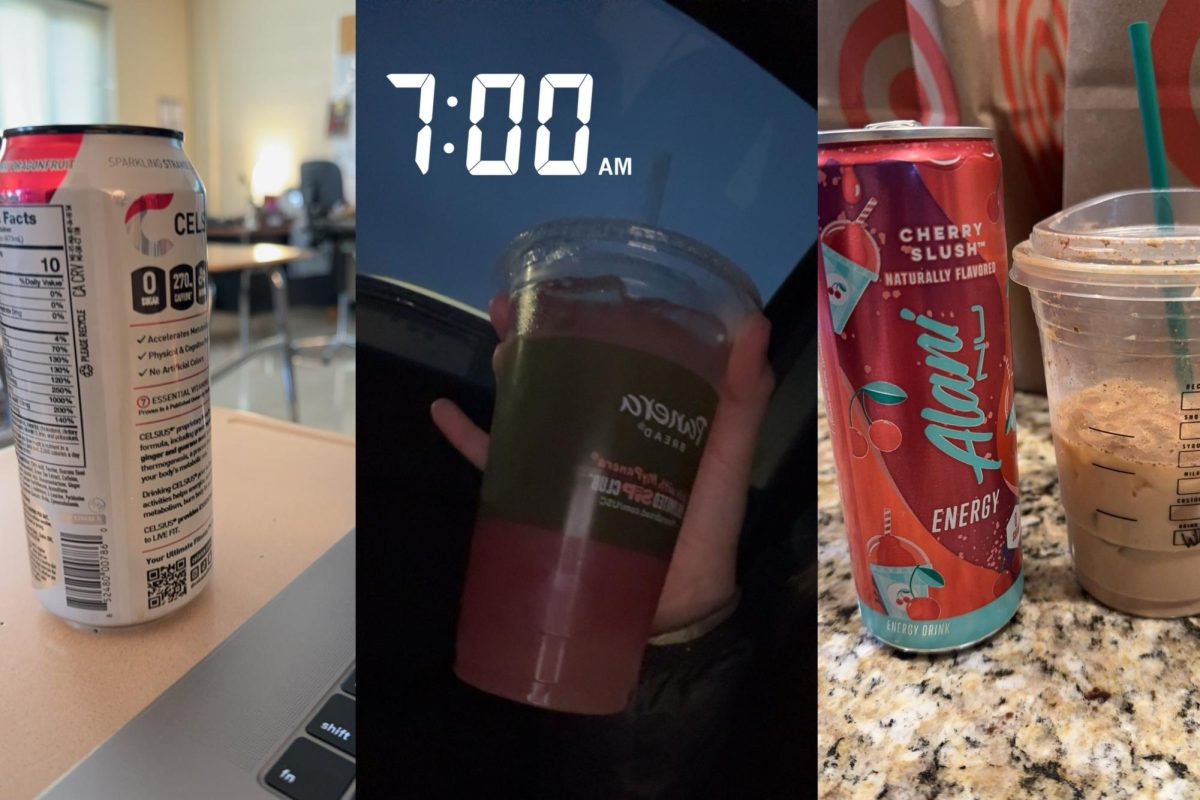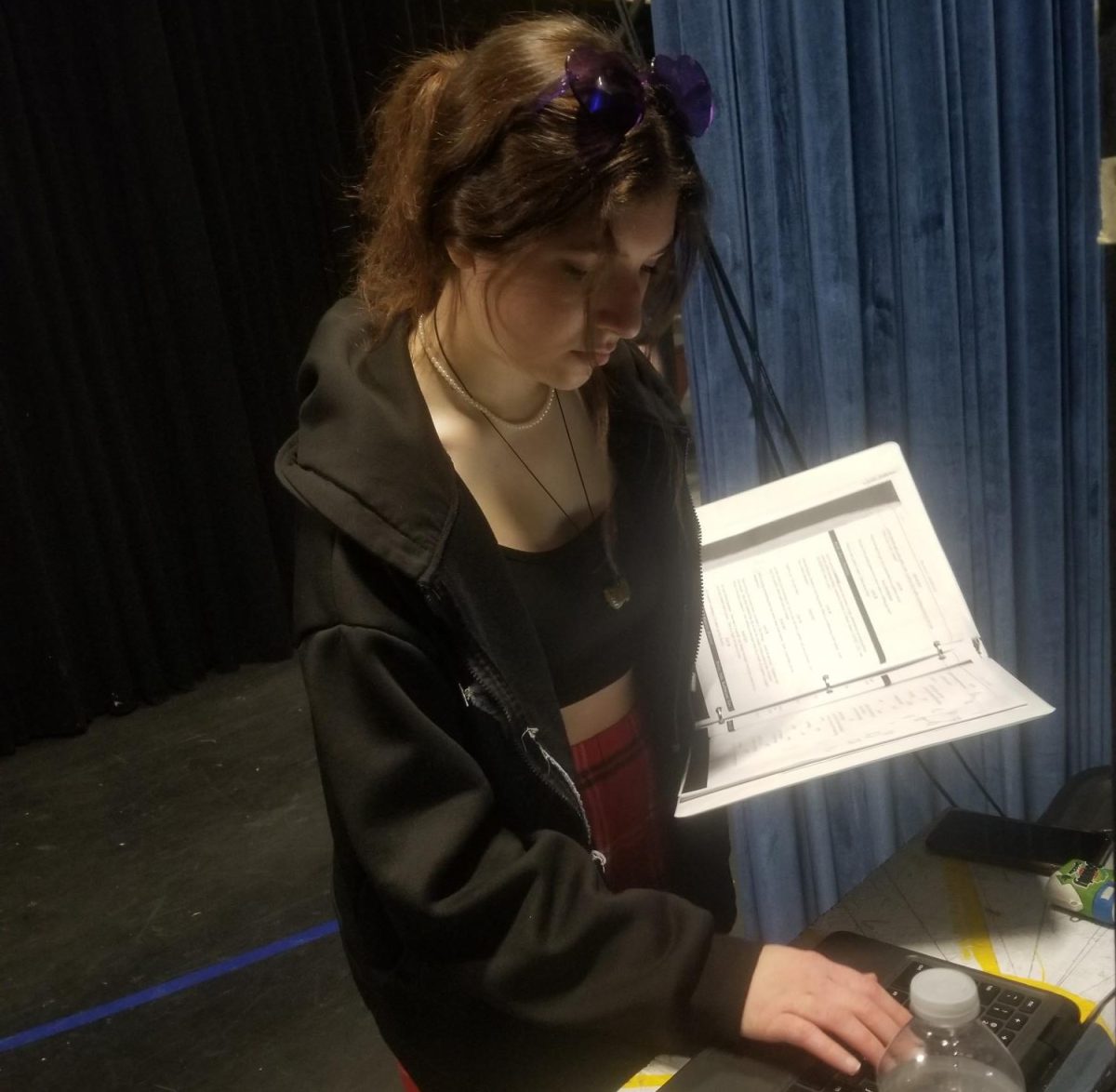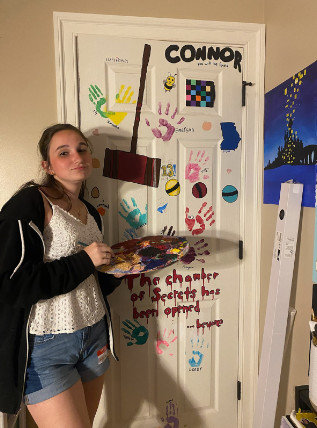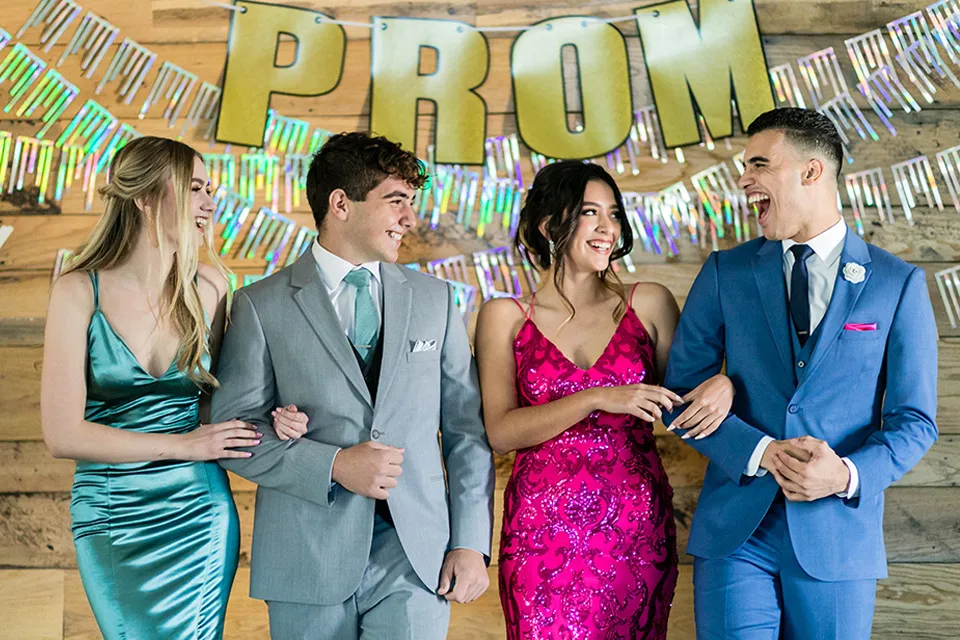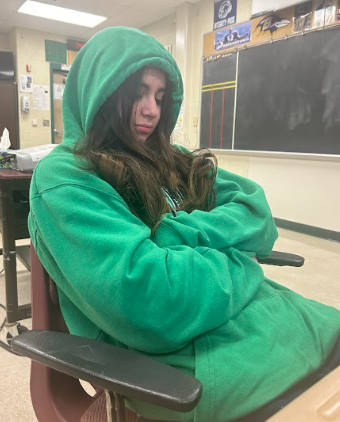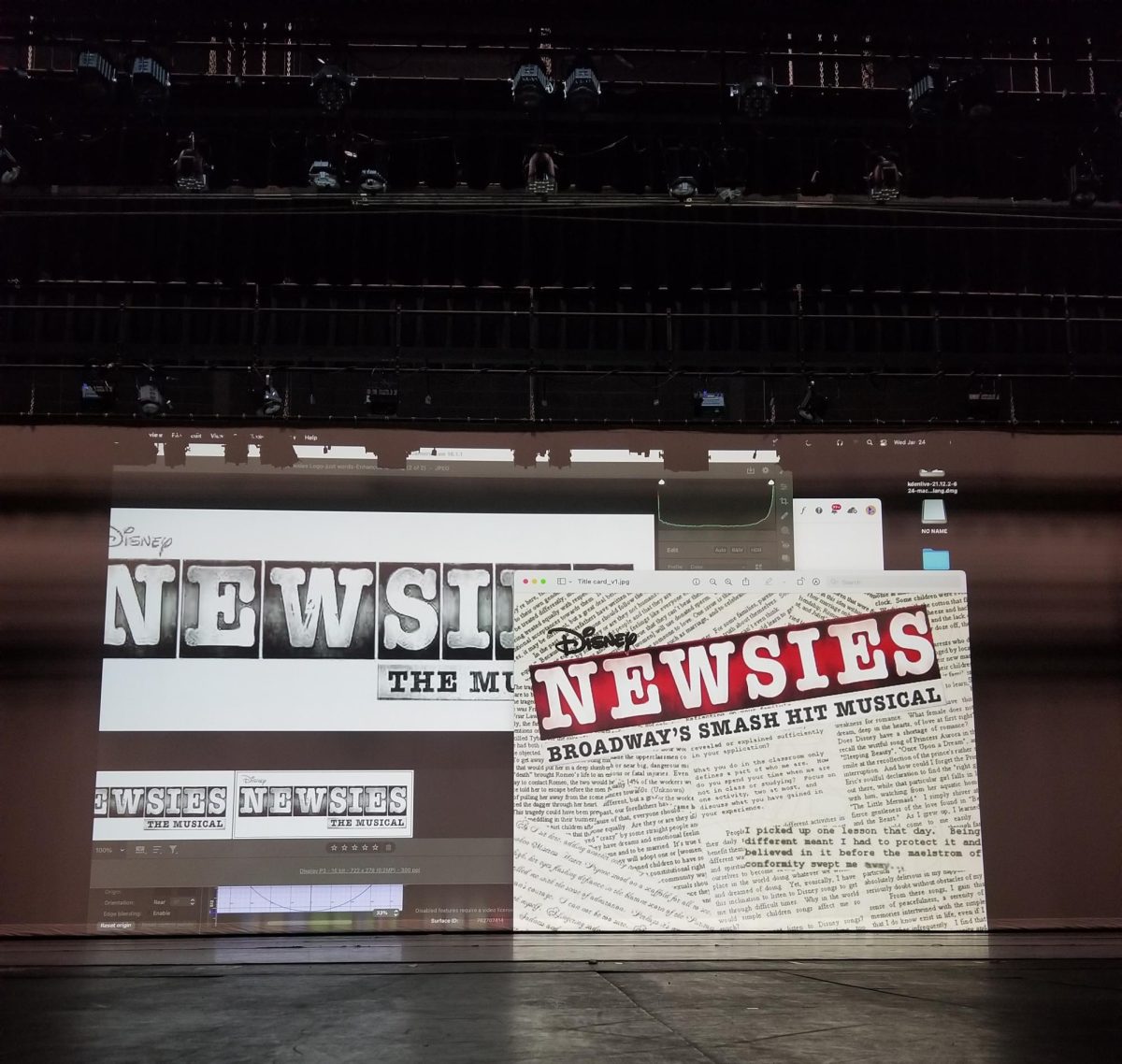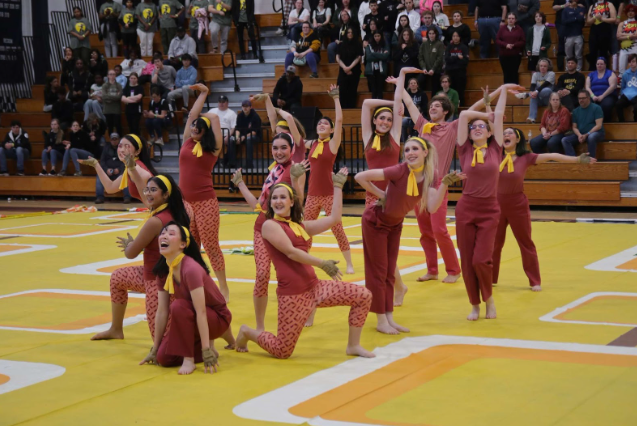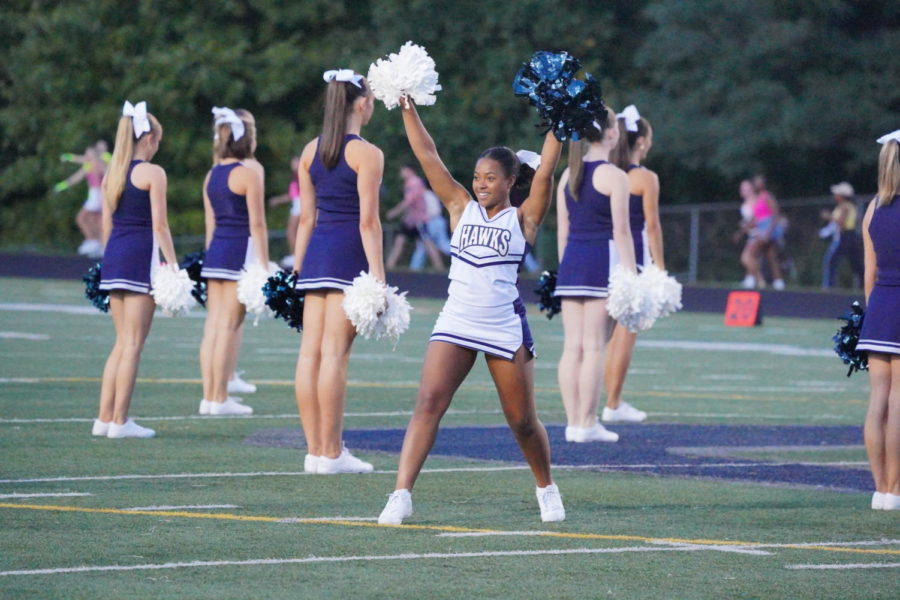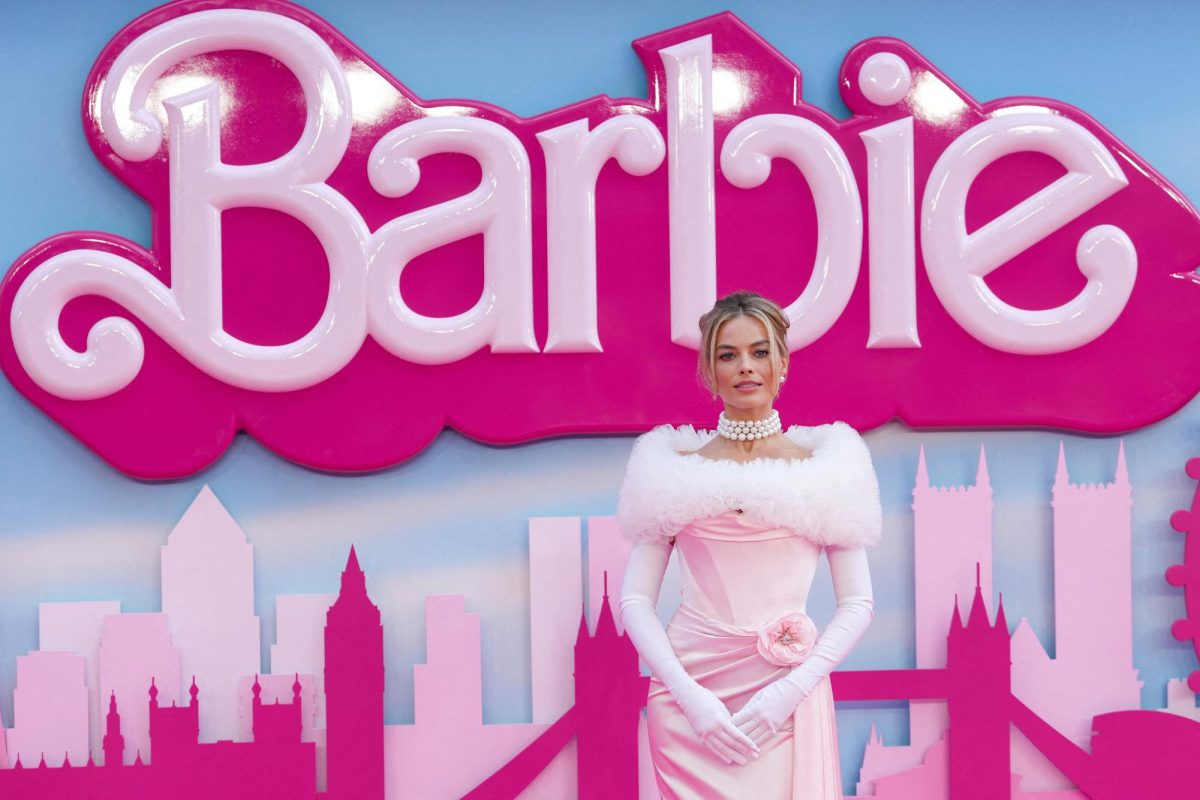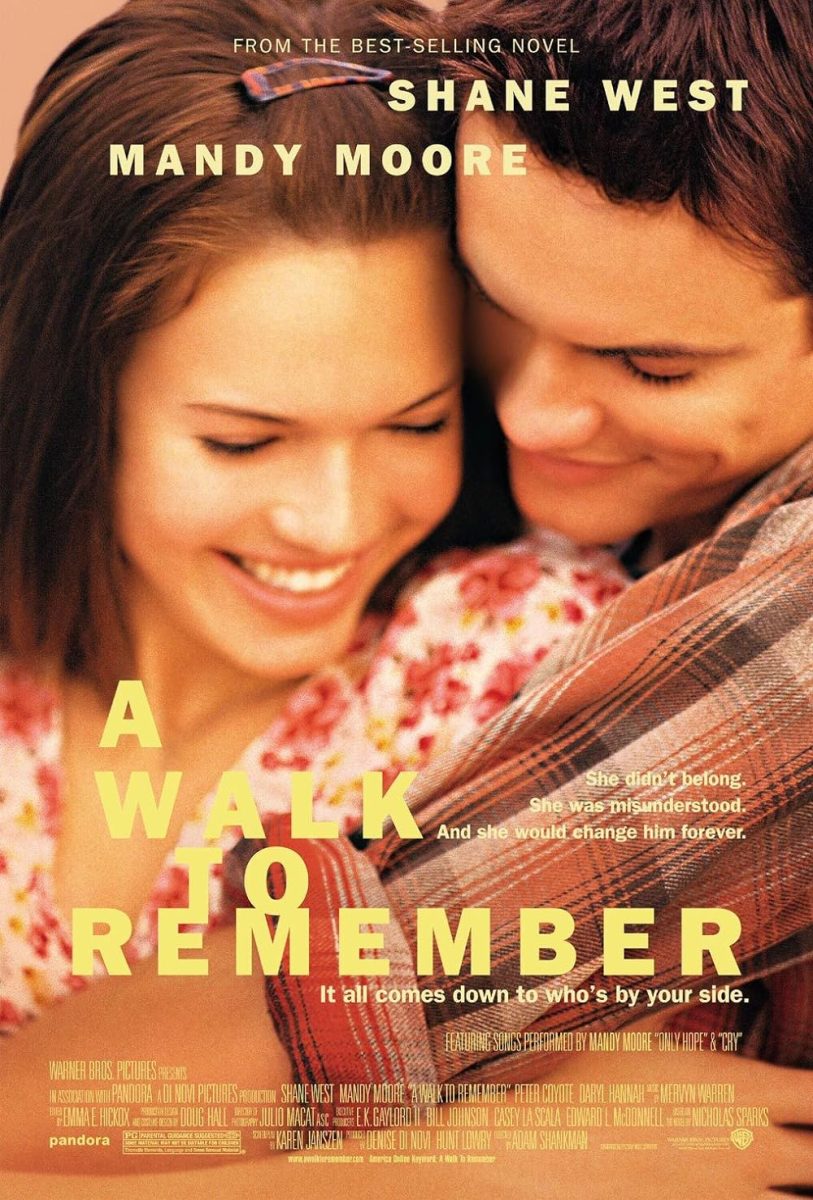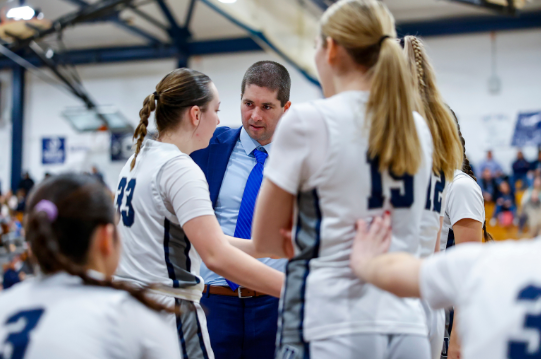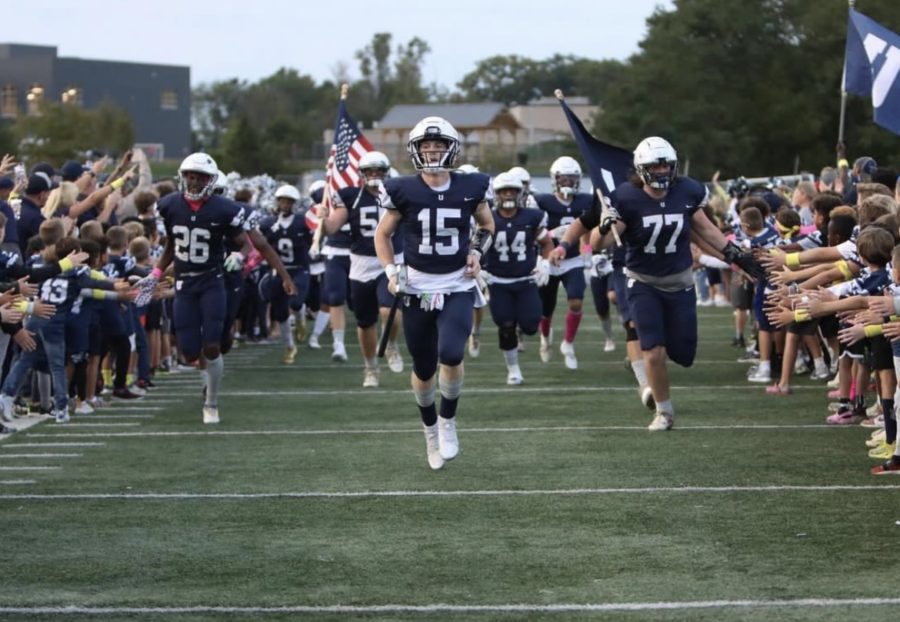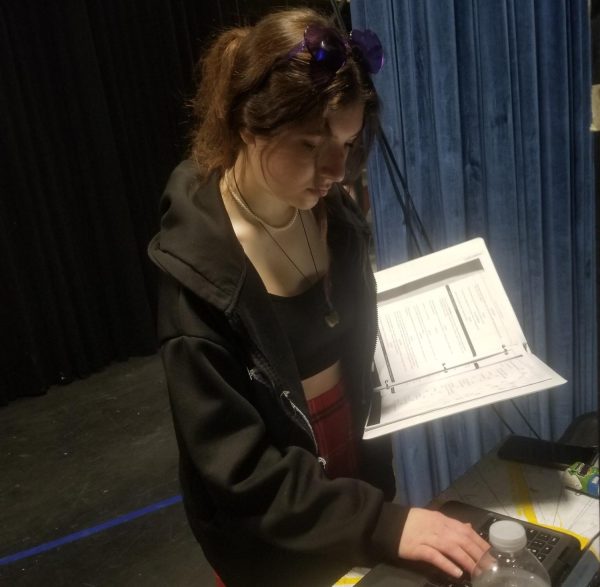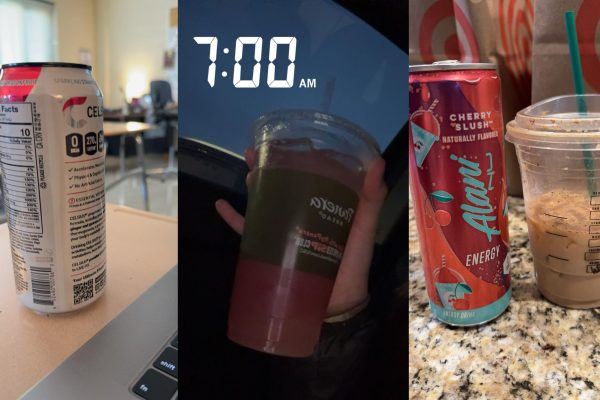Color Guard’s Flags Fly Year-Round
February 17, 2016
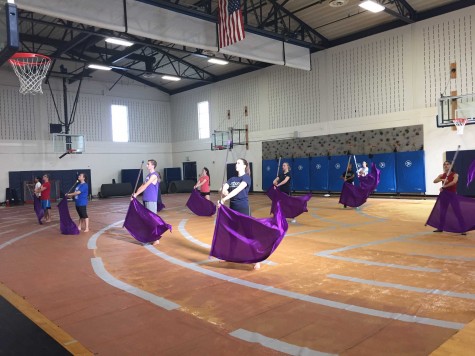
Winter Color Guard practices their performance to Dancing On My Own.
Between the months of January and March Winter Color Guard stays busy as they practice for the upcoming show in April. This year, indoor color guard consists of nineteen students who are engaging in their creative passions.
In simplified terms, Winter Color Guard is when the performers “use a combination of flags, rifles and sabers to present some sort of story,” said color guard director, Michael Harrison. There are people in drumline and people in the pit; the pit consists of those who play the keyboard, electronic percussion, and synthesizers.
In order to start the season on a positive note, the color guard instructors do a lot to prepare. They determine song choice. They then proceed to “listen to the music and describe what [they] see happening during various parts of the music (while) creating a storyboard of the production.” said color guard instructor Kyle Miller. This helps them figure out where to place the performers and allows them to adjust choreography and placement as necessary. Miller said, “Much of the actual choreography is created more organically, experimenting with different movements and equipment skills and then assessing whether the choreography fits the music and the pace of the show.”
Students demonstrate tenacity, patience and a good attitude making practice highly beneficial. In November, the students and those involved start going to practice in order to discuss the upcoming season. They start writing the show in December over a series of practices and camps. Practice for the placement and choreography begins in early January to late March. There are several hours of practice weekly. Becca Wiles said, “ [We practice] eight hours a week plus four to nine on Fridays…sometimes [we] practice nine to nine on Saturday [if there is not competition,]” If there are no shows on Saturday, they will have a twelve hour practice. During practice the students do performance exercises which help determine mood and facial expressions.
Each individual discusses the meaning of the theme to them in order to create a better show. This year’s theme is unique. “It’s going to be a love show, but not a stereotypical love show. Kyle Miller writes shows in a really intellectual way with a bunch of underlying themes,” said Meredith. The song being performed this year is Calum Scott`s cover of Dancing on my Own. Uniforms have not yet been decided but they “will be dresses because it goes with the theme of the show,” said Meredith.
They compete 5 or 6 Saturdays throughout the winter, performing the one song. The people they compete against are those in their division: the ranking is based off of last year’s performance and the first couple competitions of the current year they are in. There are several rankings and four judges who grade you for each aspect. Each color guard is ranked individually. The Winter Guard International is Scholastic A Guard. This means that they are competing in school based group For KIDA, Keystone Indoor Drill Association, they are a blue guard. As you increase in rank, the longer the shows have to be.
Meredith said the winter color guard “performs a five or so minute show that involves dance and spinning, flags, rifles, and saber.” The season ends in the beginning of April. This is the final competition where all the circuits go and compete against the groups in their ranking.
The two main differences between indoor and outdoor is the location and the music source.
“There is a different feeling that you get when you’re performing right next to somebody who is playing your music.” said Wiles.
“It’s easier to control what you’re doing because nature isn’t a factor” said Meredith.
These aspects create diversity among the two seasons.
“I always say that I can teach anyone to spin a flag, but it’s the drive to constantly improve one’s self and the ability to have an awareness of the small details that makes a truly talented color guard performer,” said Kyle Miller, summing up the secret to success when deciding to take part in color guard.

